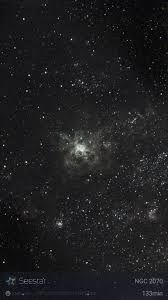Szijártó Áron:
Vinny Vent:
What comes to mind first is more integration time. The more time on the target you have, the cleaner your master stacks will be, allowing for a better end product. This doesn’t require any monetary outlay just patience.
It also depends on your definition of “without new equipment”… Does this mean an assumption of not spending “anything” at all? If not, and you have some type of small budget, you can look to the software side of the hobby. RC-Astro’s products, like BlurXterminator and NoiseXterminator, work fantastic. Pixinsight is another great investment but on the pricey side if your budget is constrained. GraXpert offers a great little suite of tools that offers denoising and background removal for free. SIRIL is another free alternative to Pixinsight although not as robust feature and ability wise. These tools can dramatically alter the quality of your image either for no cost or some small cost (small in relation to the hobby).
If you have the ability traveling to a dark site would also yield better quality images. Only cost would be any transportation fees (gas / public transit). If you image at home like I do and you scope is exposed to stray lights like a street lamp you can take steps to mitigate that by making a light shield wall out of PVC and black tarp if your even slightly handy and for a very low cost. Not a huge difference but can help.
These are just some thoughts that came to mind. Hope it helps.
So it depends on on how long am i stacking the image? And what if a message pops up that says the stacking failed and discarded? Does that mean that the device can no longer stack the image?
As Jan stated above you have to keep in mind field rotation. Due to the fact the SeeStar is not on an equatorial mount and is an Alt-Az go-to device you will begin to see stacking artifacts appear at the edges. See image I attached to show an example, notice how the corners are much darker.
You can tinker with times and see at what point the artifacts become to overwhelming. Let’s say after 20 minutes on a target. Make sure you have the setting to save sub frames on and move on to another target. The next clear day go out and image the same targets again. This method allows you to keep saving more and more sub frames and have more integration time. You can then use free software like SIRIL to stack and process them all together later.




